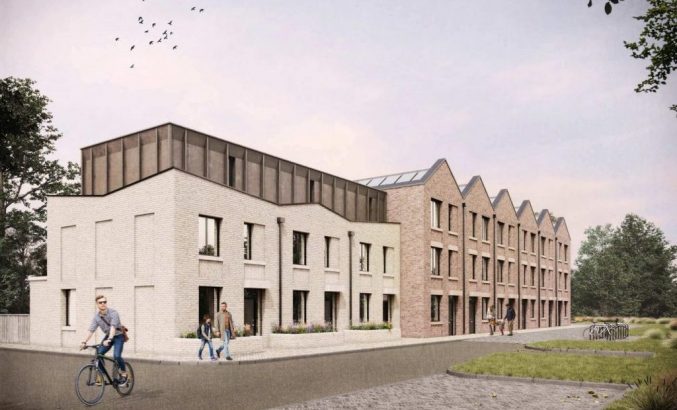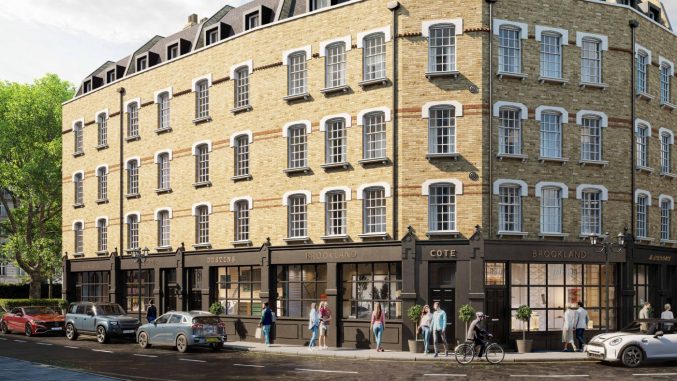Development exit finance guide
By Harry Baker

Development exit bridges are typically a short term means of finance offered on properties at the end of a development loan.
These properties can either be fully finished (Standard Development exit) or can be wind and watertight requiring further works and further funding (Finish and exit).
Typically, development exit loans are bridging loans (some are development loans), and offer terms from 6-14 months. Interest is generally retained and fees are deducted from the loan advance.
Development exit loans can be completed on almost any type of property (commercial and residential) or ownership structure (LTD, LLP, Individual name, BVI etc).
Development exit loans can be completed as quickly as 3 days, but typically take between 14-50 working days, dependent on the lender and client.
Rates vary based on risk and exposure, but generally speaking rates from 0.75-1% per month are usually available at 65-70% LTV but some lenders offer 75% depending on borrowers’ circumstance.
As the interest is fully retained (unless you opt for servicing), payments are taken upfront from the net advance.
Standard development exit
This is for developers who have come to the end of the development finance term or seeking funds on a completed site.
Developers with completed sites, looking to extend the sales period often use a development exit bridging loan as a way to mitigate their risk by extending the marketing and sales period.
Sometimes these bridging loans are used to release cash for other sites or acquisitions on completion.
Standard development exits can achieve leverage of up to 75% LTV, and most lenders typically require the properties to have a full warranty in place, certificates and building control sign off.
Some lenders, can use site visits and communication with providers and therefore do not require these.
To get the best terms from a lender directly present them with the following:
- Warranty information (must have been commenced)
- Building control monitoring information
- Sales information (deposits, pre-sold, completed)
- Marketing information
- Addresses
- Values
- Timescale
These are fairly easy refinances and typically a standard valuation is instructed, and the lenders legals commence as normal.
A site visit from the valuer is typically completed to ensure the site is at completion, and the lender may want to check warranty information, building control and sales information during underwriting.
The finish and exit
This is the second main development exit, this is for sites that have overshot on timescale and require further funding and cash injection to get their site to completion.
There are very few lenders in the market (nationwide) competing for these deals especially at higher (65%+) LTV’s.
The finish and exit often has drawdowns to fund further works on site, these drawdowns are provided in arrears.
Drawdown requests will generally be accompanied with a valuation reinspection and an updated schedule of works will be required.
On valuation uplift further funds will be drawn as per the agreed facility, this is generally a proportion of works value (up to 100% of works in arrears).
Some lenders are moving away from valuation reinspection to advancing funds based on works progress, however the market typically requires reinspection.
To get terms from your lender you will require the following:
- Warranty information – Client must have begun the warranty process and made the first payment
- Building control monitoring – Client must have positive progress to date and be compliant
- Insurance – Contractors insurance or buildings insurance (which allows remaining works)
- Wind and watertight or a certain percentage of works progress
For both development exits underwriting teams will be interested in the following information:
- Credit scores of borrowers
- Location of the build
- Saleability within the area and site
- Experience of the borrower
- Personal guarantee information
- Exit Strategy
- CIL/Section 106 outstanding
These can be quite complex refinances as typically a development appraisal valuation is instructed.
The lender’s legal team and underwriting team will also want to get comfortable with the plans, current building control position and that there will be a warranty in place on completion.
A site visit may be undertaken from the lender to ensure that the site is satisfactory to their criteria.
Development Exit Finance FAQ
As a company that helps people find the right development finance provider, we have been asked hundreds of different questions in relation to securing development exit finance. For this reason, we have answered some of the most common on this page.
What is development exit finance used for?
It is a short term loan normally used to repay outstanding finance on a property development or refurbishment, after the project has reached practical completion or during the process.

Harry Baker is Credit Manager at Aspen Bridging










You must be logged in to post a comment.